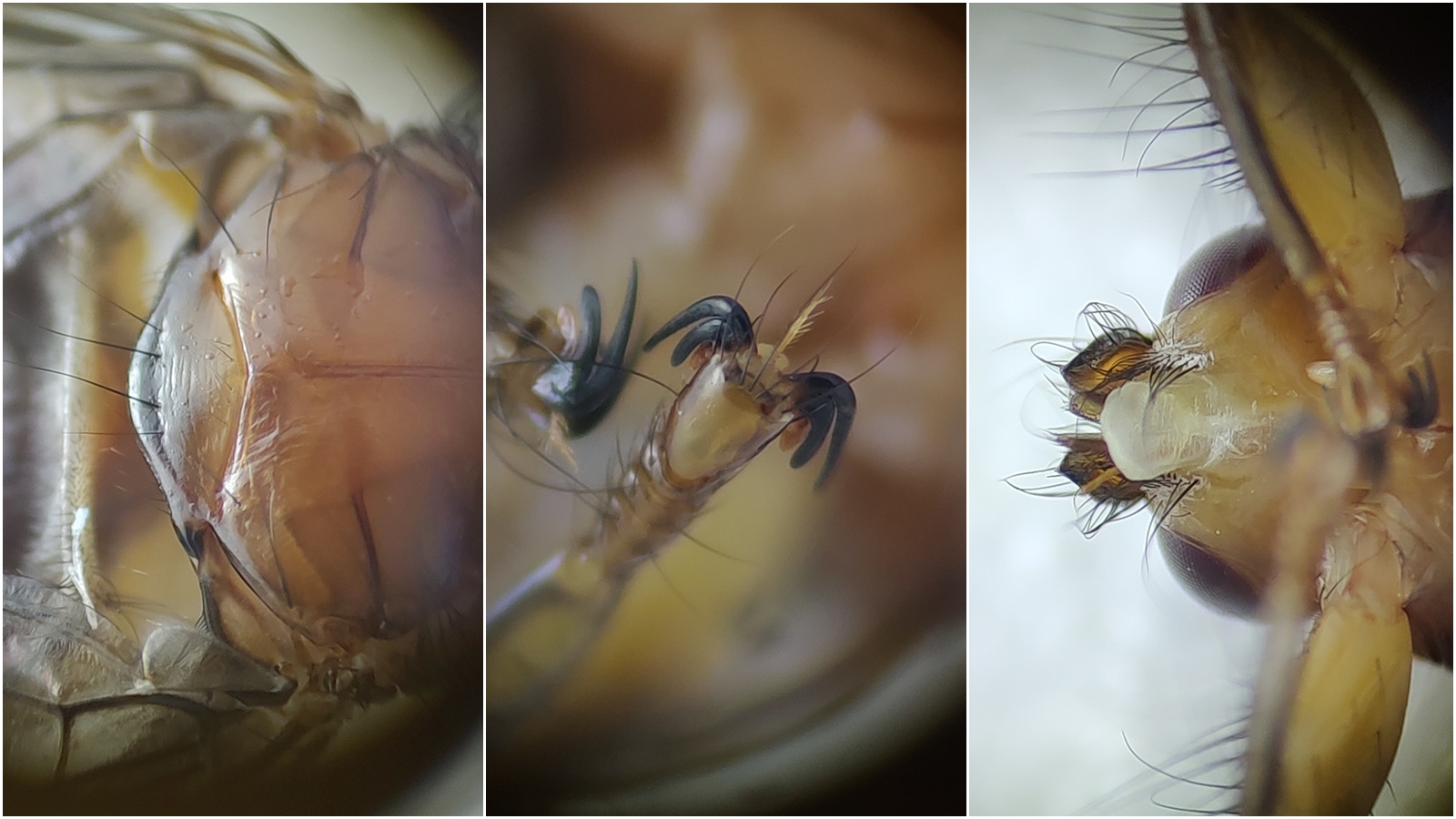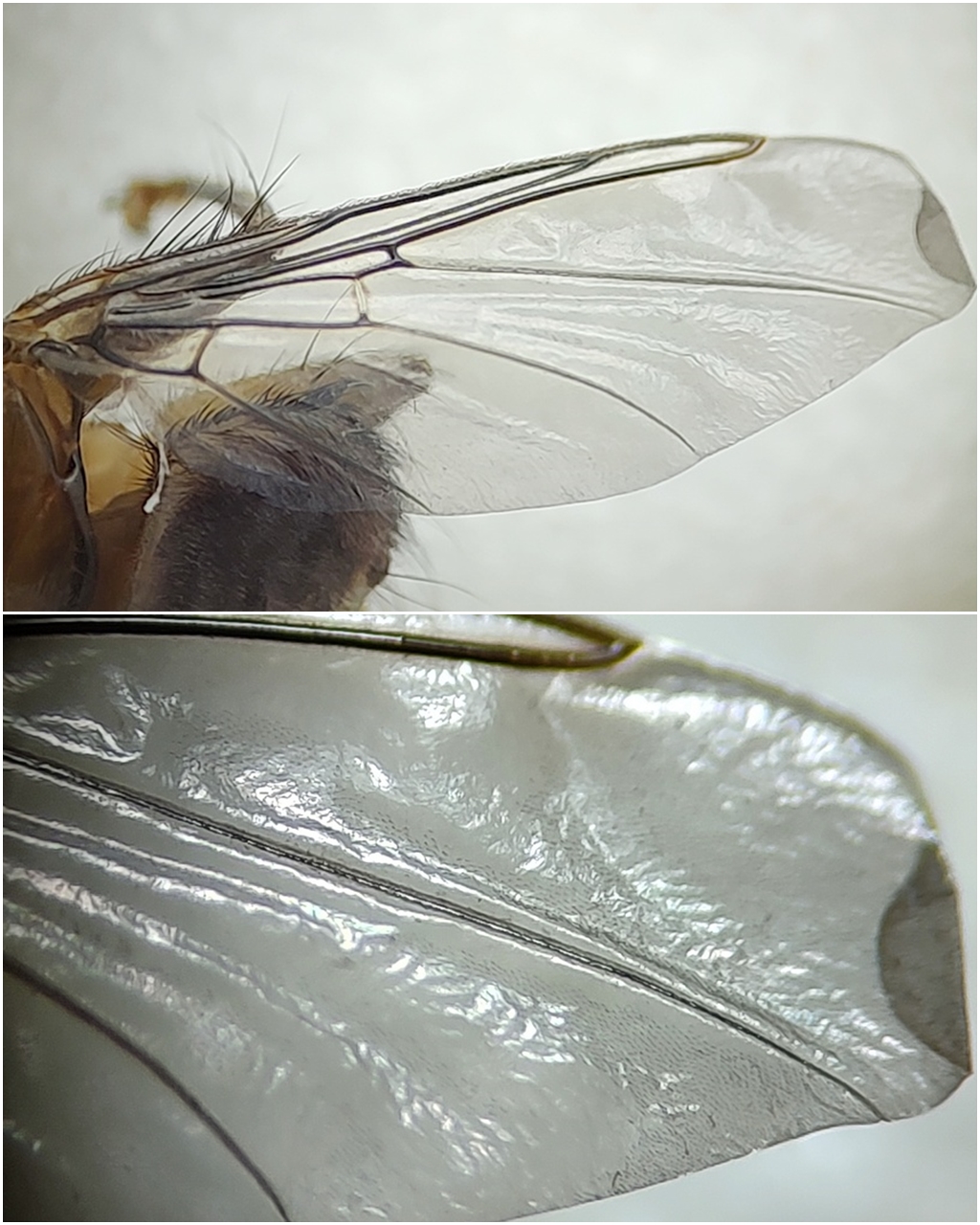Thread subject: Diptera.info :: Ornithomya rupes Hutson, 1981 (Hippoboscidae)
Posted by Alexandru Pintilioaie on 05-08-2022 03:55
#1
A nice Hippoboscidae species collected a few days ago in Romania, it seems this is the first record of the species for the country :)



Posted by Jozef Obona on 05-08-2022 06:31
#2
Congratulations ! |t
Posted by Zeegers on 05-08-2022 11:40
#3
what was the host ?
Theo
Posted by Alexandru Pintilioaie on 06-08-2022 05:38
#4
Zeegers wrote:
what was the host ?
Theo
A juvenile Dendrocopos syriacus
Posted by Zeegers on 06-08-2022 17:42
#5
In that case, i need to study your pics very closely, because this host is most unlikely. I am afraid you are looking at an avicularia, could you explain why that is not the case ?
Theo
Posted by Zeegers on 06-08-2022 19:57
#6
I am sorry to ruin the party, but this is clearly not rupes. Not only the host does not fit, but also
* ocelli present and distinct, strong
* no additional bristles on scutellum before apical row. Rupes has many
* wing venation different.
* much larger bare parts on wing
The wing venation strongly suggests this to be avicularia, which is consistent with the host. Also the bare areas in wing support avicularia
However, there appear to be only 4 apical scutellar bristles, this should be 8-10.
My gut feeling is that this is avicularia but some apical bristles are broken off.
In any case, alas, not rupes.
Whereas avicularia and fringillina have many hosts, rupes and biloba have only one.
Theo
Posted by Zeegers on 06-08-2022 19:58
#7
Pictures of rupes in "Die lausfliegen der Schweiz" (Buttiker, 1994)
Posted by Alexandru Pintilioaie on 07-08-2022 05:56
#8
Dear Theo, thank you very much for your comments on this one. The study of flies is not really my cup of tea but I like them and I'm trying to learn some of them. I keyed this fly using the paper of Josef Orbona et al., 2022. In O. fringilina the C sector between R1 and R2+3 is not longer than between R2+3 and R4+5 (in my specimen is longer). In O. avicularia the scutellum has 8 setae and in my specimen there are only 4 setae (2 long and 2 shorter). Are there any remains of the broken off setae, for what should I look.
Please don't get me wrong, I am not trying to say that I am right with my identification (most probabbly I am not), I am just trying to understand where I did wrong on the key from Obona et al. 2022.
Posted by Jozef Obona on 07-08-2022 06:54
#9
Dear Theo and Alexandru,
please try to consider the species - Ornithomya candida Maa, 1967
details in: A SYNOPSIS OF DIPTERA PUPIPARA OF JAPAN 1967
Pacific Insects 9 (4): 727-760
p. 741
Posted by Zeegers on 07-08-2022 16:55
#10
Dear Alexandru
I am sorry, I don’t understand your question. I am afraid I can only repeat myself: the specimen seems inconsistent, but mu gut feeling is that it is avicularia and simply some bristles are broken off. It happens ….
Theo





